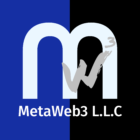The Rise of Headless CMS: Everything You Need to Know...
Read MoreThe Rise of Headless CMS: Everything You Need to Know

Table of Contents
Introduction
Brands are constantly looking for better ways to manage and deliver content across various platforms—websites, mobile apps, smart devices, and more. While traditional content management systems (CMS) have served businesses well for years, they often come with limitations when it comes to flexibility, performance, and multi-channel publishing.
This is where Headless CMS offers a new approach. By separating the content from how it’s displayed, it gives developers and marketers the freedom to create more dynamic and versatile digital experiences.
So, what exactly is a Headless CMS, and why are more companies making the switch?
Let’s break it down.
What is a Headless CMS?
A Headless CMS is a content management system that separates the content repository (“the body”) from the presentation layer (“the head”). In simpler terms, it lets you create and manage content without being tied to a specific front-end design or framework.
With a Headless CMS, content is delivered via APIs, allowing developers to use any programming language or technology to present that content wherever it’s needed—your website, mobile app, smartwatch, AR experience, or any digital screen.
Why Is It Becoming So Popular?
The surge in demand for omnichannel marketing, personalized user experiences, and faster content delivery has led many businesses to abandon traditional CMS platforms in favor of more flexible, scalable solutions.
Here are some reasons behind the rapid adoption of Headless CMS:
- Omnichannel Content Delivery: Your content can live anywhere—on websites, apps, IoT devices, or digital signage—without duplicating efforts.
- Developer Flexibility: Front-end developers aren’t restricted by the CMS’s templating language. They can use modern JavaScript frameworks like React, Vue, or Angular.
- Better Performance: Headless architecture enables faster load times and enhanced performance by decoupling the content layer from the front-end.
- Improved Security: Without a front-end to attack, headless CMS platforms offer better protection against common vulnerabilities.
- Future-Proofing: As new devices and platforms emerge, a headless setup ensures your content is ready for whatever comes next.
Traditional CMS vs. Headless CMS
When comparing a traditional CMS to a headless CMS, several key differences stand out. Traditional CMS platforms come with a built-in front-end, making them monolithic in structure. This limits flexibility, as both the content and its presentation are tightly connected. In contrast, a headless CMS decouples the front-end from the back-end, offering far greater flexibility and enabling content to be published across multiple channels with ease.
While traditional CMS tools often rely on specific templates and proprietary systems, a headless approach gives developers the freedom to use any programming language or framework they prefer. This opens the door to creating custom, performance-optimized experiences. Additionally, omnichannel support can be difficult to implement with a traditional CMS, whereas a headless CMS is designed from the ground up for delivering content seamlessly across websites, apps, IoT devices, and more. The result? Faster performance, more control, and a future-ready content infrastructure.
Is Headless CMS Right for You?
While a Headless CMS offers many benefits, it’s not a one-size-fits-all solution. Businesses with a strong development team and a need to publish content across multiple platforms will benefit the most.
It’s ideal for:
- E-commerce sites aiming for omnichannel experiences
- Enterprises with mobile apps and web portals
- Brands wanting to scale content across regions and languages
- Marketing teams needing more agility and collaboration
But if you only need a simple website with limited customization and no multichannel requirements, a traditional CMS like WordPress might still serve you well.
Popular Headless CMS Platforms
Some of the leading headless CMS platforms in the market include:
- Contentful
- Strapi
- Sanity
- Prismic
- Storyblok
- ButterCMS
Each offers different features, pricing models, and levels of developer support. Choosing the right one depends on your team’s needs and technical skills.
Conclusion
The digital landscape is changing, and with it, the way we manage and deliver content must evolve. Headless CMS is not just a buzzword—it’s a forward-thinking solution that empowers brands to be faster, smarter, and more adaptable.
At MetaWeb3, we help businesses integrate cutting-edge CMS solutions that align with their digital strategy. Whether you’re going headless or just need guidance, our team is here to help you navigate the future of content management.
Want to explore how Headless CMS can elevate your brand’s digital experience? Let’s talk.
Traditional Marketing vs. Digital Marketing: Which Strategy is Right for Your Business?
Traditional Marketing vs. Digital Marketing: Which Strategy is Right for...
Read MoreThe Marketo Advantage: Streamline, Automate, and Grow Your Business
The Marketo Advantage: Streamline, Automate, and Grow Your Business Table...
Read MoreMastering Social Media Ad Copy: Character Limits and Best Practices for 2024
Mastering Social Media Ad Copy: Character Limits and Best Practices...
Read More




